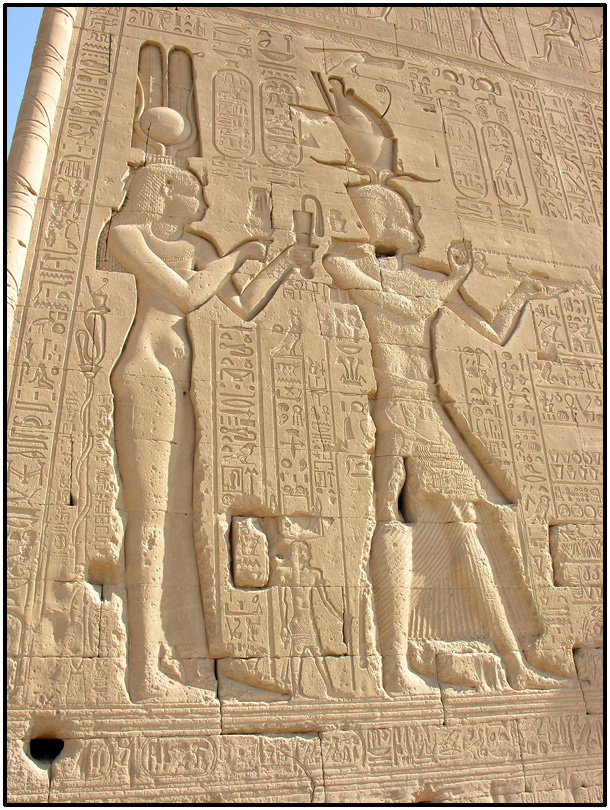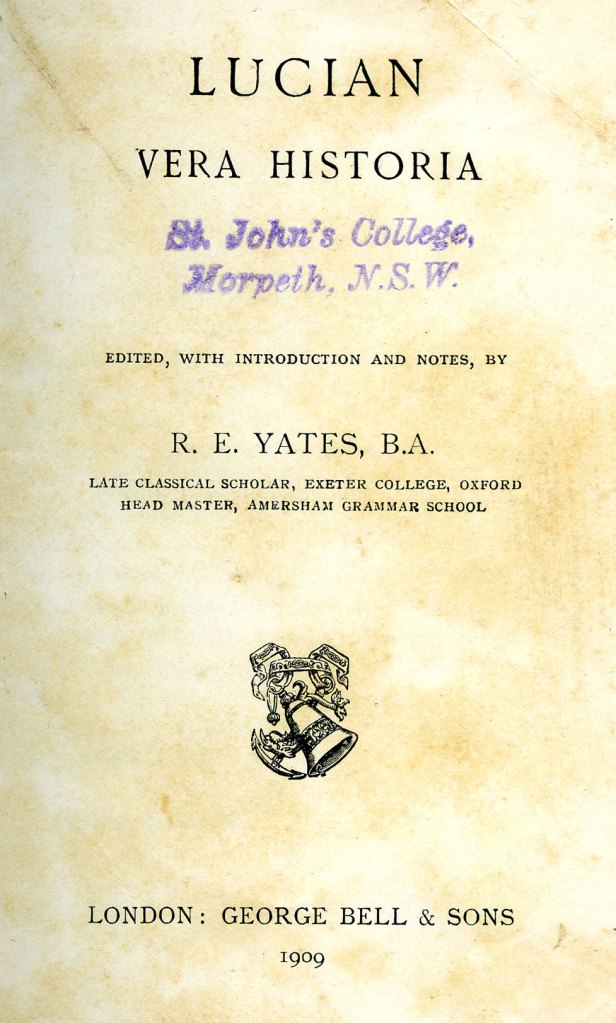Alexandrian KingsKavafy's poem called Alexandrian kings.
The Alexandrians turned out in force
to see Cleopatra’s children,
Kaisarion and his little brothers,
Alexander and Ptolemy, who for the first time
had been taken out to the Gymnasium,
to be proclaimed kings there
before a brilliant array of soldiers.
Alexander: they declared him
king of Armenia, Media, and the Parthians.
Ptolemy: they declared him
king of Cilicia, Syria, and Phoenicia.
Kaisarion was standing in front of the others,
dressed in pink silk,
on his chest a bunch of hyacinths,
his belt a double row of amethysts and sapphires,
his shoes tied with white ribbons
prinked with rose-colored pearls.
They declared him greater than his little brothers,they declared him King of Kings.
The Alexandrians knew of course
that this was all mere words, all theatre.
But the day was warm and poetic,
the sky a pale blue,
the Alexandrian Gymnasium
a complete artistic triumph,
the courtiers wonderfully sumptuous, Kaisarion all grace and beauty
(Cleopatra’s son, blood of the Lagids);
and the Alexandrians thronged to the festival
full of enthusiasm, and shouted acclamations
in Greek, and Egyptian, and some in Hebrew,
charmed by the lovely spectacle—
though they knew of course what all this was worth,what empty words they really were, these kingships
Partly to throw light on a certain period,
partly to kill an hour or two,
last night I picked up and read
a volume of inscriptions about the Ptolemies.
The lavish praise and flattery are much the same
for each of them. All are brilliant,
glorious, mighty, benevolent;
everything they undertake is full of wisdom.
As for the women of their line, the Berenices and Cleopatras,
they too, all of them, are marvelous.
When I’d verified the facts I wanted
I would have put the book away had not a brief
insignificant mention of King Kaisarion
suddenly caught my eye...
And there you were with your indefinable charm.
Because we know
so little about you from history,
I could fashion you more freely in my mind.
I made you good-looking and sensitive.
My art gives your face
a dreamy, an appealing beauty.
And so completely did I imagine you
that late last night,
as my lamp went out—I let it go out on purpose—
it seemed you came into my room,
it seemed you stood there in front of me, looking just as you would have
in conquered Alexandria,
pale and weary, ideal in your grief,
still hoping they might take pity on you,
those scum who whispered: “Too many Caesars.”
Kavafy's poem called Kaisarion
 |
| Ptolemy Caesar |
Just as Kavafy says in his poem Kaisarion(Caesarion) there are not many references about Caesarion and if there some, they are completely insignificant or they lack reliability.These sources are really so few for someone who was the son of the Great Caesar the "ruler" of Rome and Cleopatra the Queen of the strongest of the Hellenistic kingdoms in the east and for someone who bore the two strongest and most prestigious names in the world during his time.Ultimately this deadly combination of names was Caesarion's doom...
Caesarion was born in 47 BC and according to Cleopatra he was Caesar's son. Cleopatra aimed at making him the successor of her kingdom and heir of Caesar as head of the Roman republic. Mainly because of pressure from the Romans Caesar didn't officially recognise Caesarion . However he was brought to Rome for two years from 46 BC to 44 BC when Cleopatra was invited by Caesar to Rome. In 44 BC when Caesar was assaninated Caesarion was declared as co-ruler at the age of three by his mother. This action was part of Cleopatra's policies with Rome but also a part of her ambitious plans about her son's future and part of her attempt to present to her subjects her realtionship to her son similar to the relationship of the Egyptian goddess Isis and Horus. It was very important to present a religious legitimacy for her son in order to preserve the loyalty of the Egyptians to her and Caesarion. Apparently Caesar found the "chosen by the gods" tactic very effective and along with his megalomania he tried to implement it in the Roman world by presenting himself as a god but he ultimately failed.
Cleopatra's charm was very effective to an another Roman general Marcus Antonius.In 34 BC Mark Antony seduced by Cleopatra granted to Caesarion many Eastern lands of the Roman republic making the Egyptian kingdom almost equal in power to Rome and a potential threat for the Romans.
 |
| The lands given to Ptolemy Caesar by Mark Antony. This act caused the final breach in his relations with Octavian. |
The battle of Actium canceled all the plans of Cleopatra and Mark Antony for the creation of a strong Eastern empire. Caesarion who was 17 at this time was sent at the port of Verenice for safety and in case that Romans invaded in Egypt he would sail for India. From this point the historical sources are a bit unclear about Caesarion's fate.Plutarch says:
"Caesarion, who was said to be Cleopatra's son by Julius Caesar, was sent by his mother, with much treasure, into India, by way of Ethiopia. There Rhodon, another tutor like Theodorus, persuaded him to go back, on the ground that [Octavian] Caesar invited him to take the kingdom"
Plutarch assumes that Octavian presuaded by a Greek philosopher of Alexandria decided to execute Caesarion. The Philosopher called Arius Didymus said to Octavian: "Too many Caesars is not good"
But was actually Caesarion a Caesar or was he just his mother's chess piece? All these titles that he received and the really heavy name that he had to carry as a burden weren't really mirroring the reality around him. Egypt during Cleopatra's reign was already a client kingdom of Rome and its independence was only guaranteed by Caesar and later by Mark Antony.
When Caesar died Cleopatra persuaded Mark Antony to adopt Caesarion as his own child and even though he had two other children with Cleopatra Caesarion was the first in line of succession. Therefore only if Caesar(if he had lived) or Mark Antony wanted it, Caesarion would have been all that he was promised that he was destined to become.Technically we could say that since he was nominated co-ruler by Cleopatra Caesarion was the last male Pharaoh of Egypt.
 |
| Cleopatra and Caesarion depicted as Isis and Horus(their mythological equivalents) |










